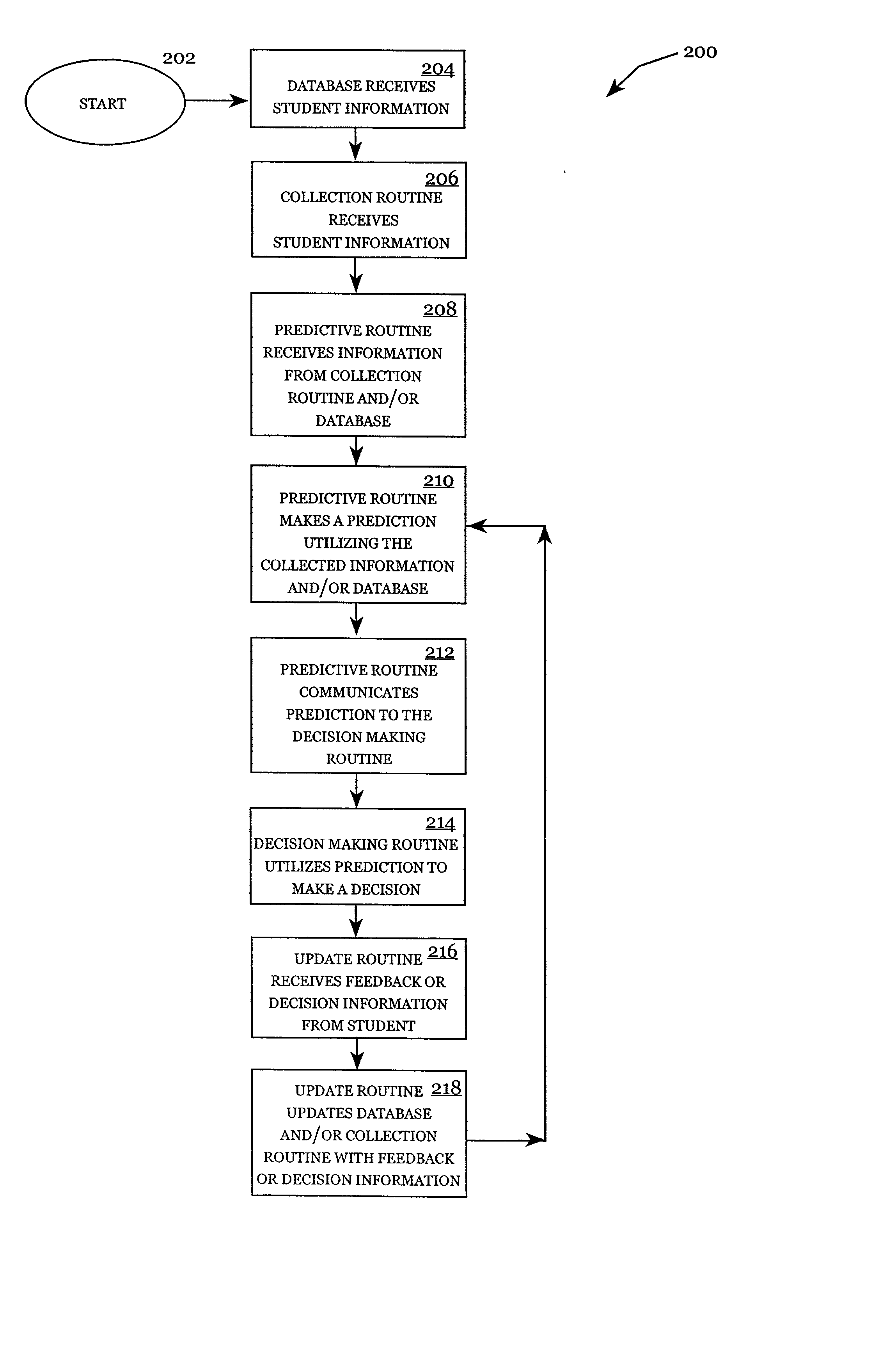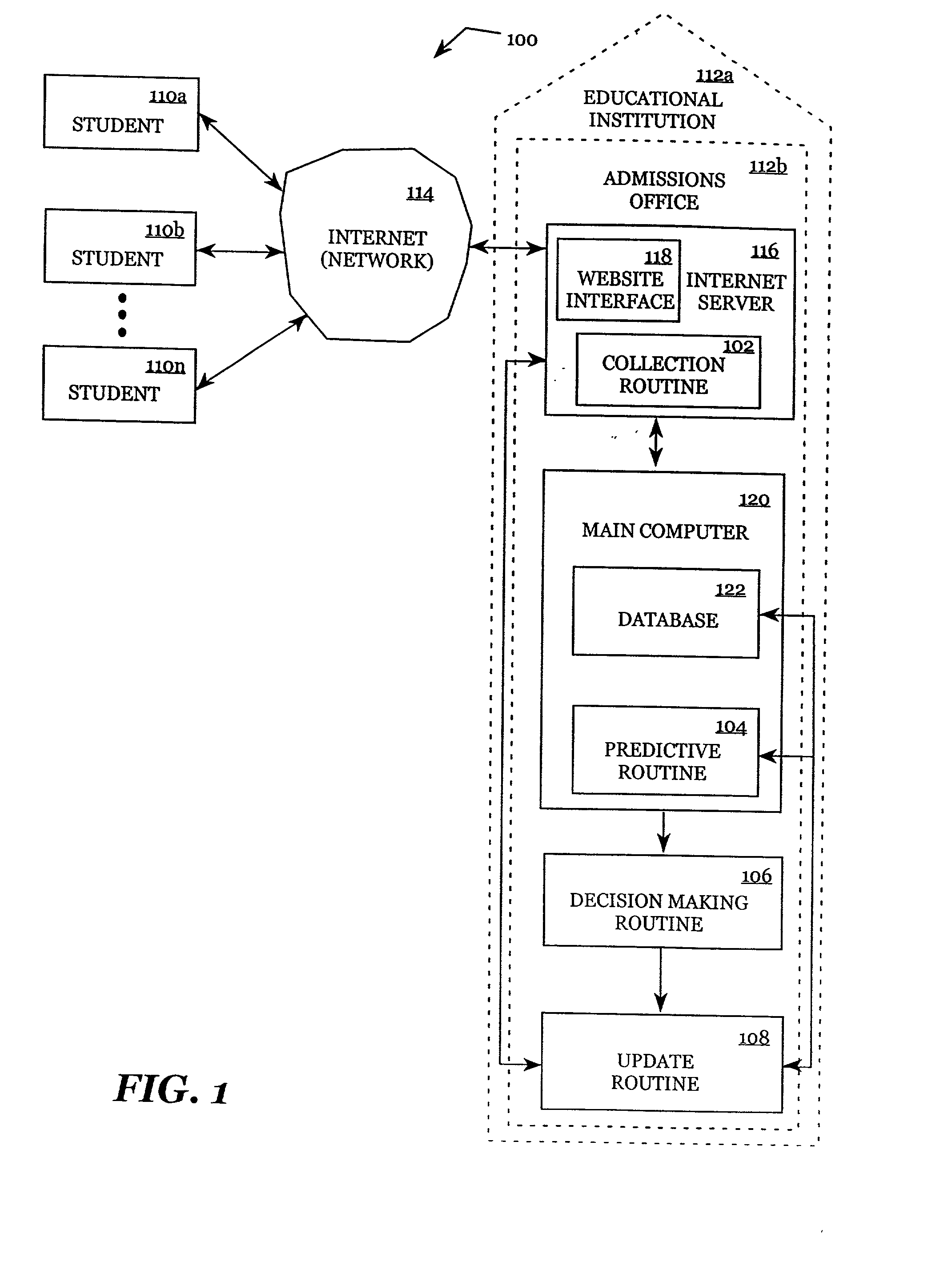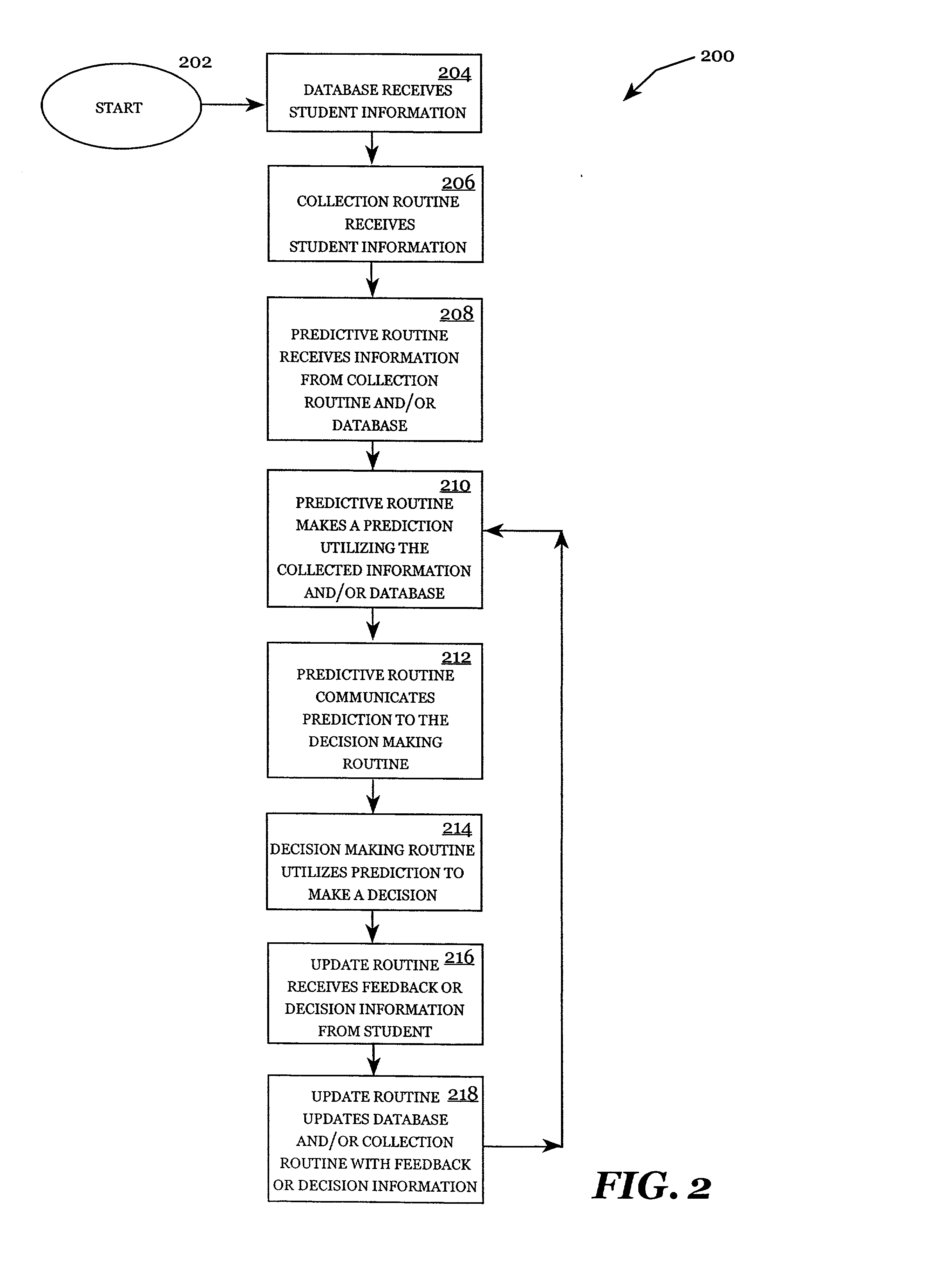Systems and methods for making a prediction utilizing admissions-based information
a technology of admissions-based information and system, applied in the field of system and method for making a prediction utilizing admissions-based information, can solve the problems of inability to dynamically understand, affecting the quality and affecting the quality of future so as to reduce costs and improve the quality of subsequent predictions of prospective student behavior
- Summary
- Abstract
- Description
- Claims
- Application Information
AI Technical Summary
Benefits of technology
Problems solved by technology
Method used
Image
Examples
Embodiment Construction
[0037] The invention provides systems and methods for making a prediction utilizing admissions-based information. The invention provides systems and methods to generate an improved prediction that is more accurate, made in real time, and projects the likelihood of an individual prospective student's enrollment in an educational institution. The aggregates of those predictions can provide summary predictions at various levels of aggregation (e.g., "all rural acceptances", "all Southern acceptances", or the entire population). This enables an admissions office for an educational institution to target its contact program to only those students who have not yet decided, and to change the number of acceptances in the next round of a multi-round enrollment process.
[0038] The invention comprises one or more routines that execute a statistical and / or a quantitative analysis of data from several sources, including a prospective student's usage of a set of proprietary or non-proprietary Inter...
PUM
 Login to View More
Login to View More Abstract
Description
Claims
Application Information
 Login to View More
Login to View More - R&D
- Intellectual Property
- Life Sciences
- Materials
- Tech Scout
- Unparalleled Data Quality
- Higher Quality Content
- 60% Fewer Hallucinations
Browse by: Latest US Patents, China's latest patents, Technical Efficacy Thesaurus, Application Domain, Technology Topic, Popular Technical Reports.
© 2025 PatSnap. All rights reserved.Legal|Privacy policy|Modern Slavery Act Transparency Statement|Sitemap|About US| Contact US: help@patsnap.com



